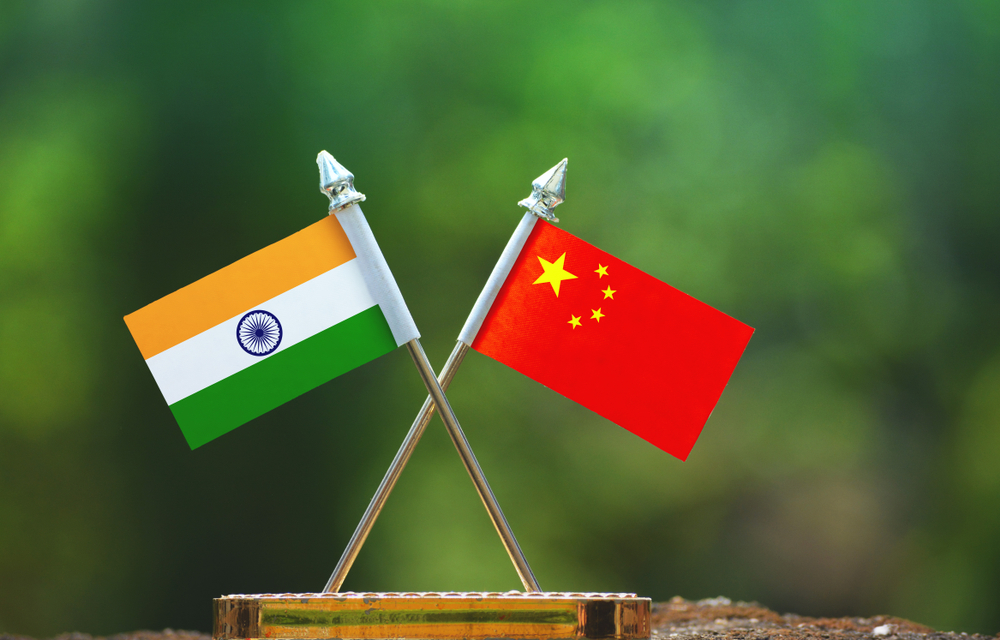India has steadily been asserting itself as a powerhouse of emerging markets over the past few years as its government embarks on a financial and industrial overhaul.
The country’s rapid rise has been well documented. India’s GDP is expected to grow 7% in 2024, by far the fastest among the world’s largest economies, after the Reserve Bank of India revised its forecast upwards at the end of last year.
Its rise has come at a time when China’s stock has been falling. The country’s beleaguered property sector has been a symbol of its failure to bounce back from the pandemic while its tough regulatory stance on tech kept investors second-guessing.
This was reflected earlier this year when the weighting gap between Indian and Chinese equities in the MSCI Emerging Markets index fell to historic lows.
Following the rebalance, India’s weighting grew from17.9% to 18.5% while China’s share declined to 25.4%, down from around 31% six months ago and its lowest point since 2017.A similar scenario can be seen in the countries’ bond markets.
A JP Morgan decision to include India into its emerging market global diversified index from June 2024 is set to drive significant flows into the market, as roughly 23 bonds with a combined value of $330bn are set for inclusion.
Alberto Garcia Fuentes, head of asset allocation at ACCI Capital Investments, believes there is an investment case for both China and India, but for contrasting reasons.
“China and India are completely different stories,” he said. “China is a value play while India is growth, with the latter focusing on technology and creating new infrastructure."
If India is growth, China is value
On the face of it, there are several tailwinds for the Indian economy which gives it momentum over China. India has just embarked on upon an election that is set to secure incumbent Prime Minister Narendra Modi a third term in office.
The country has long benefitted from political – and geopolitical – stability that has enabled it to steal a march on China.
Stephen Kemper, chief investment strategist, team advisory desk, at BNP Paribas Wealth Management, said: “The rising tensions between China and the US has given the Indian economy a boost. In the wake of friend shoring, a lot of production has been shifted from China to India.
“India is playing a very smart geopolitical game as we are moving away from US domination to a multi-polar world. They are even managing to trade with Russia without any major retaliations from the EU."
While its high growth rate provides an opportunity for investors much of this has already been priced in. The forward-looking price-to-earnings ratio of the Indian stock market is around 20x, compared to its long-term average of 16.3x.
“I wonder how much gas is in the tank for the Indian market. Can it continue to show such superior returns? At the current valuation, the expected return may be below 5% annualised for the next 10 years, which is not too great,” Kemper added.
This is also where China’s troubled market could provide an opportunity. The Chinese government is taking steps to address some of the debt issues with real estate developers, while its tech sector now trades at half its 2020 valuations and for some is too cheap to ignore.
“China is the second-largest economy and in a global recovery it should perform well,just based on its valuation,” Garcia Fuentes said.
Playing India’s emergence with ETFs
Whether or not India does go on to dominate emerging markets its growing presence is causing investors to rethink their allocations.
Its emergence has led to several ETF product launches over the past few months, including the HSBC S&P India Tech UCITSETF (HITC), while DWS and BlackRock have both cut fees on their products in a sign of increasing competition.
Garcia Fuentes said the rising dominance of India led the firm to sell out of country-specific ETF exposures to both China and India in favour of the Xtrackers MSCI Emerging Markets UCITS ETF (XMME).
“We wanted to diversify our emerging market exposure and XMME still offers good exposure to China and India as the two largest players, while also playing Taiwan, South Korea, Brazil and Mexico,” he said.
Kemper added Indian bonds currently look very attractive versus China, with the former offering a 7% yield over 10 years while China is around 2.3%. “I would rather buy Indian bonds than Chinese bonds, although the yield gap is a bit excessive and will likely narrow in the years to come,” he said.
India’s capital market challenges
India has been taking steps to improve access to its capital markets for foreign investors, including rapid digitisation and policy reform, but some believe it has further to go.
Inés de Trémiolles, global head of trading at BNP Paribas Asset Management, said the growth of India in emerging markets is causing issues for ETFs due to the difficulty in setting up an account in the country.
“India’s weighting increase will increase flows to the market, but opening up an account in India is still a nightmare,” she said. “Asset managers with scale will be able to do it, but smaller players will not be able to afford it.”
Kemper noted the improvements being made in India’s capital markets but backed China to stay as the biggest weighting in emerging markets. “China will stay the biggest weight in MSCI for the foreseeable future, unless anything crazy happens, which I do not expect,” he said.
However, Garcia Fuentes believes India’s geopolitical advantage will see it overtake China in the long term.
“India will become the largest player in emerging markets, overtaking China, be-cause they are taking advantage of different geopolitical risks and are more open to foreign investors,” he predicted. “China can perform well based on valuations, but overall they are at a disadvantage compared to India."
This article first appeared in ETF Insider, ETF Stream's monthly ETF magazine for professional investors in Europe. To read the full edition, click here.



